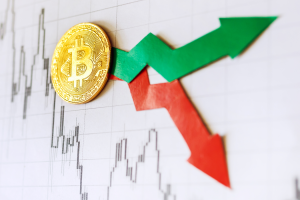
It used to be a company being valued at $1 trillion was a big deal. When Apple (NASDAQ:AAPL) became the first company to cross that threshold in 2018, there was a lot of hoopla surrounding the event. Today, it seems companies routinely earn trillion-dollar market caps.
Not really, but there are six companies as of this writing that have valuations exceeding $1 trillion: Apple, Microsoft (NASDAQ:MSFT), Alphabet (NASDAQ:GOOG)(NASDAQ:GOOGL), Amazon (NASDAQ:AMZN), and the most recent one, Nvidia (NASDAQ:NVDA).
Some have achieved the distinction only to tumble afterward, namely Meta Platforms (NASDAQ:META) and Tesla (NASDAQ:TSLA). And certainly, others are within striking distance of entering this small club. What follows are three industry-leading stocks that have a good chance of becoming the next trillion-dollar stocks.
Berkshire Hathaway (BRK-A)(BRK-B)

I’m not making any bold declarations when I say Berkshire Hathaway (NYSE:BRK-A)(NYSE:BRK-B) could be one of the first stocks to attain trillion-dollar status. It is already worth $789 billion. To ascend to those new heights in just five years would require Warren Buffett to generate returns of just 5% annually. Over the past five years, the Oracle of Omaha has done twice as well on average.
There are some risks to this eventuality. The main one is the advanced age of Buffett and his partner Charlie Munger. Both are nonagenarians and though we wish them all a continued long life, well, they’ve actually enjoyed that. Buffett understands this and has investment managers in place who will step in when he dies. In fact, they are making many investment decisions for Berkshire Hathaway today. What investors don’t know, though, is exactly which investments they’ve made so it’s difficult to gauge their performance. That could change the calculus of whether Berkshire can continue to grow as it has.
Berkshire Hathaway has $157 billion in cash which gives it quite a war chest to buy stocks opportunistically. Those purchases could have the stock grow even faster. It will also receive about $6 billion in dividend payments this year further juicing returns. It seems it’s only a matter of if, not when Berkshire becomes a $1 trillion stock.
Exxon Mobil (XOM)

Integrated oil and gas giant Exxon Mobil (NYSE:XOM) is the second stock with a good chance of gaining a trillion-dollar valuation. At a current valuation of $420 billion, it has a longer road to travel than Berkshire Hathaway, but there are strong tailwinds that should push it over the finish line.
For all the talk about renewable energy sources, fossil fuels remain the primary source of energy for the world. Demand is extraordinarily high such that renewables have little chance of meeting it for years to come if not decades. While Exxon Mobil has given a nod towards alternative energy, it is doubling down on fossil fuels.
Exxon just announced it was acquiring Pioneer Natural Resources (NYSE:PXD) for $60 billion in an all-stock deal. The oil company is the largest producer in the Permian basin while Exxon is the fifth largest. Combined, they will far outstrip any other producer, but by not so much as to trigger antitrust objections.
The merged companies could produce as much as 700,000 barrels per day of new oil and gas within four years. It will raise output to as high as 2 million barrels as well. The combination of Pioneer’s low-cost operations and Exxon’s technology could result in reduced greenhouse gas emissions and more oil per well produced.
Oil prices will likely remain high for some time further padding Exxon’s already burgeoning profit pool. That could push this oil giant up to a $1 trillion valuation sooner rather than later.
Walmart (WMT)

Retail king Walmart (NYSE:WMT) is in much the same boat as Exxon. It is currently valued at $418 billion, meaning it needs to more than double to grab the trillion-dollar brass ring. That’s no small feat as we’ve seen, but the world’s largest retailer can certainly pull it off.
Walmart delivered to investors a total return of 75% over the past five years or about 11% annually. It might take the retailer a few years longer to reach $1 trillion, but it’s doable. It delivered 4.4% U.S. sales growth in the third quarter and 10.8% internationally. E-commerce sales are growing smartly, too, up 24% domestically but down 3% elsewhere. The latter fell, though, because its Flipkart subsidiary pushed its Billion Dollar Days sales event into the fourth quarter from the third this year.
Profit margins should also improve over the next few years as it pushes greater automation in its fulfillment centers to increase efficiency and productivity. Walmart’s Spark Driver platform for home delivery is already achieving 15% cost reductions while shortening delivery times.
You have a traditional retailer transforming into one set up to meet the needs of tomorrow. And even though Walmart is a multinational multibillion dollar corporation, it is still surprisingly nimble. Where it is No. 1 in physical retail, it is only behind Amazon in e-commerce. Albeit a far ways back, but it is continually improving. It’s easy to see how it can reach a $1 trillion valuation over the next five to 10 years.
On the date of publication, Rich Duprey held a LONG position in XOM stock. The opinions expressed in this article are those of the writer, subject to the InvestorPlace.com Publishing Guidelines.




